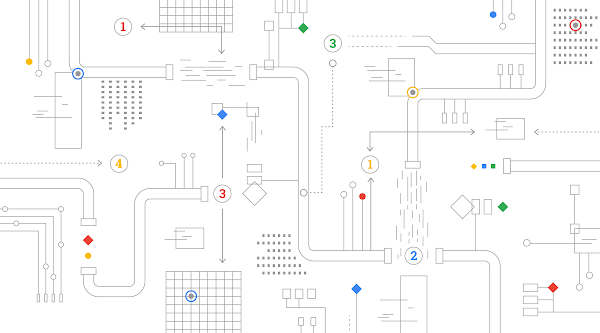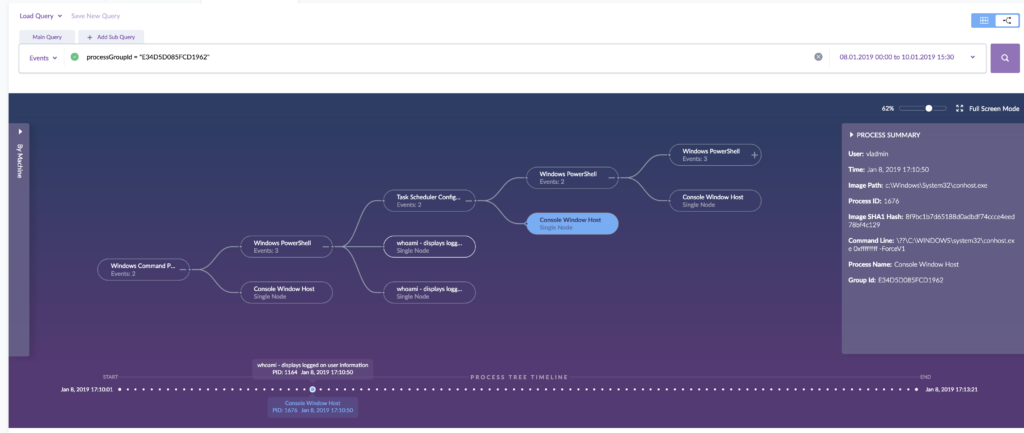- Use the dead letter pattern. Ensure you have a consistent policy to deal with errors and issues across all of your transforms. Make heavy use of the dead letter pattern whenever possible. This pattern involves branching errors away from the main pipeline path into either a dead letter queue for manual intervention or a programmatic correction path.
- Remember versioning. Ensure that all transforms have versions and that all pipelines also have versions. If possible, keep this code in your source code repositories for a period that matches the retention policies for the data that flowed through these pipelines.
- Treat schema as code. Data schemas are heavily intertwined with any pipeline. Though it’s not always possible, try to keep your definitions of schemas as code in your source repository, distinct from your pipeline code. Ideally, the schema will be owned and maintained by the data owners, with your build systems triggering global searches when things break.
- Use idempotency. When possible, ensure that most, if not all, mutations external to the pipeline are idempotent. For example, an update of a data row in a database within a DoFn is idempotent. Cloud Dataflow provides for exactly-once processing within the pipeline, with transparent retries within workers. But if you are creating non-idempotent side effects outside of the pipeline, these calls can occur more than once. It’s important to clearly document transforms and pipeline that have this type of effect. It’s also important to understand how this may vary across different lifecycle choices like update, cancel and drain.
Testing your Cloud Dataflow pipelines
There’s plenty of detail on the Apache Beam site to help with the general testing of your transforms and pipelines.
Lifecycle testing
Your end-to-end data pipeline testing should include lifecycle testing, particularly analyzing and testing all the different update/drain/cancel options. That’s true even if you intend to only use update in your streaming pipelines. This lifecycle testing will help you understand the interactions the pipeline will have with all data sinks and and side effects you can’t avoid. For example, you can see how it affects your data sink when partial windows are computed and added during a drain operation.
You should also ensure you understand the interactions between the Cloud Dataflow lifecycle events and the lifecycle events of sources and sinks, like Cloud Pub/Sub. For example, you might see what interaction, if any, features like replayable or seekable would have with streaming unbounded sources.
This also helps to understand the interaction with your sinks and sources if they have to go through a failover or recovery situation. Of special importance here is the interaction of such events with watermarks. Sending data with historic timestamps into a streaming pipeline will often result in those elements being treated as late data. This may be semantically correct in the context of the pipeline, but not what you intend in a recovery situation.
Testing by cloning streaming production environments
One of the nice things about streaming data sources like Cloud Pub/Sub is that you can easily attach extra subscriptions to a topic. This comes at an extra cost, but for any major updates, you should consider cloning the production environment and running through the various lifecycle events. To clone the Cloud Pub/Sub stream, you can simply create a new subscription against the production topic.
You may also consider doing this activity on a regular cadence, such as after you have had a certain number of minor updates to your pipelines. The other option this brings is the ability to carry out A/B testing. This can be dependent on the pipeline and the update, but if the data you’re streaming can be split (for example, on entry to the topic) and the sinks can tolerate different versions of the transforms, then this gives you a great way to ensure everything goes smoothly in production.
Setting up monitoring and alerts
Apache Beam allows a user to define custom metrics, and with the Cloud Dataflow runner, these custom metrics can be integrated with Google Stackdriver. We recommend that in addition to the standard metrics, you build custom metrics into your pipeline that reflect your organization’s service-level objectives (SLOs). You can then apply alerts to these metrics at various thresholds to take remediation action before your SLOs are violated. For example, in a pipeline that processes application clickstreams, seeing lots of errors of a specific type could indicate a failed application deployment. Set these to show up as metrics and set up alerts in Stackdriver for them.
Following these good practices will help when you do have to debug a problematic pipeline. Check out the hints and tips outlined in the troubleshooting your pipeline Cloud Dataflow documentation for help with that process.
Pipeline deployment life cycles
Here’s what to consider when you’re establishing pipelines in Cloud Dataflow.
Initial deployment
When deploying a pipeline, you can give it a unique name. This name will be used by the monitoring tools when you go to the Cloud Dataflow page (or anywhere else names are visible, like in the gsutil commands). It is also has to be unique within the project. This is a great safety feature, as it prevents two copies of the same pipeline from accidentally being started. You can ensure this by always having the –name parameter set on all pipelines. Get into the habit of doing this with your test and dev pipelines as well.
Tips for improving for streaming pipeline lifecycle
There are some things you can do to build better data pipelines. Here are some tips.
Create backups of your pipelines
Some sources, like Cloud Pub/Sub and Apache Kafka, let you replay a stream from a specific point in processing time. Specific mechanisms vary: For example, Apache Kafka supports reads from a logical offset, while Cloud Pub/Sub uses explicitly taken snapshots or wall-clock times. Your application must take the specifics of the replay mechanism into account to ensure you replay all the data you need and do not introduce unexpected duplication. This feature (when available) lets you create a backup of the stream data for reuse if required. One example would be a rollout of a new pipeline that has a subtle bug not caught in unit testing, end-to-end testing, or at the A/B testing phase. The ability to replay the stream in those ideally rare situations allows the downstream data to be corrected without doing a painful one-off data correction exercise.
You can also use the Cloud Pub/Sub snapshot and seek features for this purpose.
Create multiple replica pipelines
This option is a pro tip from the Google SRE team. It is similar to the backup pipeline option. However, rather than creating the pipeline to be replayed in case of an issue, you spin up one or more pipelines to process the same data. If the primary pipeline update introduces an unexpected bug, then one of the replicas is used instead to read the production data.
Update a running pipeline
Update is a power feature of the Cloud Dataflow runner that allows you to update an existing pipeline in situ, with in-flight data processed within the new pipeline. This option is available in a lot of situations, though as you would expect, there are certain pipeline changes that will prevent the use of this feature. This is why it’s important to understand the behavior of various transforms and sinks during different lifecycle events as part of your standard SRE procedures and protocols.






